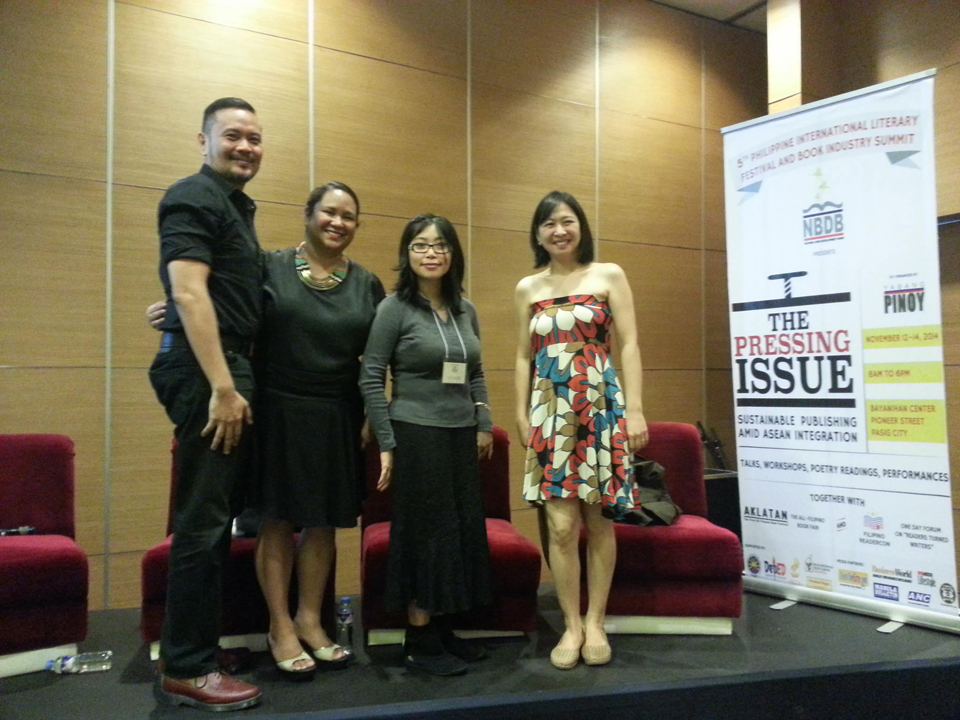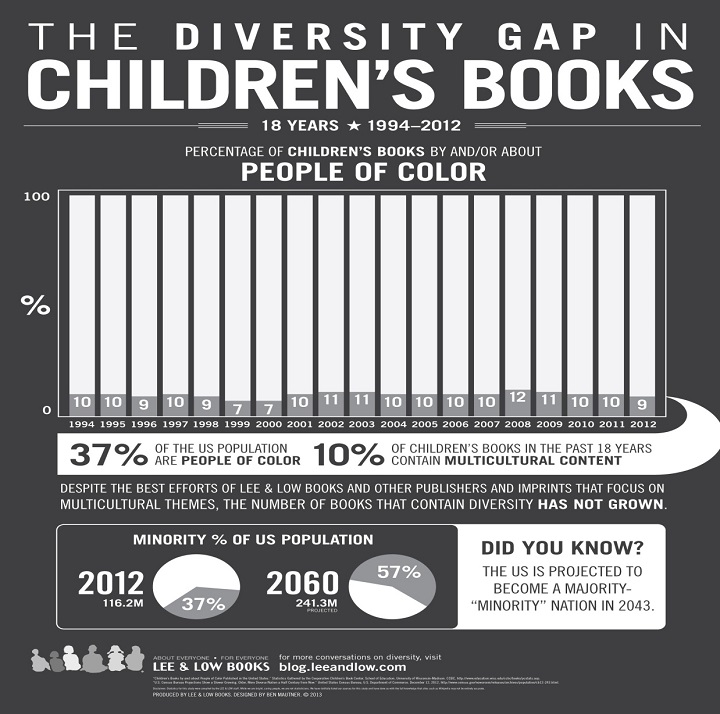Filtered By: Lifestyle
Lifestyle
Local writers tell us why #WeNeedDiverseBooks in PHL, world
By VIDA CRUZ, GMA News

L to R: Moderator Dean Alfar, panelists Sophia Lee, Rin Chupeco, and Bebang Siy for the #WeNeedDiverseBooks panel. Vida Cruz
At the “#WeNeedDiverseBooks: What makes a diverse Filipino reader?” panel moderated by speculative fictionist Dean Alfar, local authors Sophia Lee, Rin Chupeco, and Bebang Siy gave their thoughts on the matter.
Fill a niche market
Chupeco, whose Young Adult horror novel “Girl from the Well” was snapped up and released last August by US publisher Sourcebooks, said that “It's a very good time for us Filipinos to start submitting manuscripts abroad, as there is a big appreciation for protagonists who are people of color [POC] and for non-Western settings.”
Chupeco added that literary agents and international publishing houses are “very, very, very, very, very” interested in diverse fiction at the moment.
“Pinoys are not limited to Pinoy myths and settings,” said Chupeco, whose first novel is inspired by a Japanese ghost story. “Write what you know, like, and are interested in. The enthusiasm will show. It's about how well you write, how well you present yourself...The sense of diversity is what they're looking for.
“If you don't write about your Filipino roots or any non-Western thing you're interested in, nobody will read diverse books either,” she added. “But it's one thing to support the local scene and another to take up the flag and be published abroad—you need not even write in English, as your work can be translated.”
She also noted that it appears that the fear of rejection is what hinders people from submitting abroad, with the caveat that the local publishing scene is not a bad place to put out your work.
Chupeco is one of three Philippines-based, internationally published authors (the other two are Samantha Sotto and Kate Evangelista). She got herself represented by the Helen Rees Agency in 2012.
Filipinizing the campaign

The level of diversity in US children's literature is presented in this infographic by American publisher Lee & Low Books, which calls for more diversity in literature and entertainment.
“It began with American authors of color calling for more authors and characters like them to be represented in children's books,” Lee explained. “There is a worry that children who do not see themselves in books feel devalued and invisible in society. And when they grow up—when we grew up—we stop reading books about ourselves at some point.
“On our part, our children's lit sector is strong. There are lots of Pinoy child protagonists there,” she added.
Lee also compared print run statistics for US and UK bestselling books with Philippine bestsellers and how books qualify as such for each nation, as taken from Patricia Jurilla's “Story Book: Essays on the History of the Book in the Philippines.”
For example, a book printed in the Philippines will likely have a run of 500 to 1,500 copies, and it is a bestseller when its entire print run sells out within a year. Meanwhile, the US and the UK have differing bestseller-qualifying statistics for hardbacks and paperbacks:
UK: 20,000 to 160,000 (hardback); 200,000 – 1.2 million (paperback)
US: 100,000 to 800,000 (hardback); 1 million – 6 million (paperback)
But more importantly, with such dismal numbers in the Philippines, Lee asked, how can we Filipinize the #WeNeedDiverseBooks campaign?
Lee had two suggestions: 1) Readers must decide to pick up a diverse book, and 2) take a "shelfie,"' or photo of your shelf that clearly shows the books of the local authors you like and share it on social media.
Lee also encouraged the aspiring writers in the audience to enter the Scholastic Asian Book Awards, which offers a generous cash prize each year and may even publish runner-up works some years, as with what happened to Lee and runner-up author and fellow Filipina Catherine Torres.
“It's a great opportunity for diverse books—the contest is very open to anything as long as the characters are Asian and the setting is or is inspired by Asia,” she said. “It encourages people to read and write more about underrepresented characters.”
#WeNeedDiverseReadingMaterial
The prolific Beverly "Bebang" Siy, author of “It's a Mens World” and numerous other books and moderator of local book club Pinoy Reads Pinoy Books, advocated not just diverse books, but diverse reading material all around.
She cited statistics from a NBDB survey: eight out of 10 Filipino adults read non-required or non-textbook books.
She said that in her experience as a Pinoy book club moderator, she noted that the adults coming in for sessions come from a wide range of professions, including chemistry teacher.
“May malaking market for books, pero gaano ka-diverse ang mga sarili nating books?” she said. “Mas marami pa rin yung pumapasok kaysa sa mga ginagawa natin.”
To illustrate her meaning about reading materials, Siy also talked about subjects she took up as an undergraduate in UP Diliman's Malikhaing Pagsusulat program: Panitikan ng Anak Pawis (letters from OFWs and blue collar workers), Panitikang Third World (books from and about war-torn places such as Afghanistan), and Panitikang Ilocano (many books of which are published in Hawaii, where many Ilocano writers are based).
“Basta puti, blonde, lagi na lang nating binabasa,” said Siy. “Dapat nating i-explore yung panitikan from other Asian countries—they are geographically, experientially, and agriculturally closer to us than Western countries.
“Pansinin din natin yung mga aklat ng ibang panahon—doon natin makikita kung ano yung uso noon. Example, yung language noon—mabulaklak at mahahaba yung pantig kasi they had all the time in the world those days,” she added.
Siy also advocated reading books from other religions, offering up one she read about the horror stories of Marawi Muslims, and reading materials on other subjects. Siy herself got very interested about stocks and the stock market and educated herself via books and the internet.
Alfar had this to add to the discussion:
“Kapartner ng #WeNeedDiverseBooks is #WeNeedDiverseReaders. Read across space and time and form and type,” he said. “To the readers out there, maghanap ka naman! Pumunta kayo sa maliit na imprenta, libraries, Komikon. Read different genres! If you don't, you are saying trapped ka lang diyan.”
Read: 10 reasons why libraries should carry local speculative fiction
“Read broadly, choose wisely, share it. Become a drug pusher of books to your circle of friends. Think diverse inside and out,” he concluded. — BM, GMA News
More Videos
Most Popular



